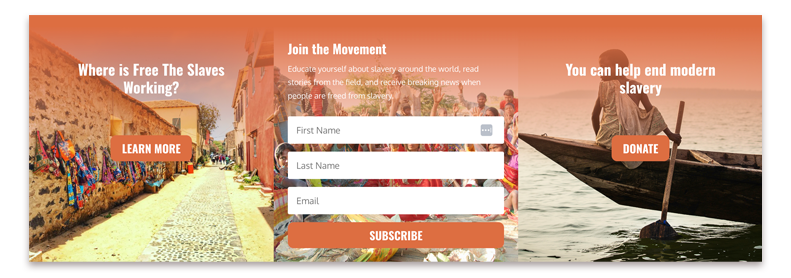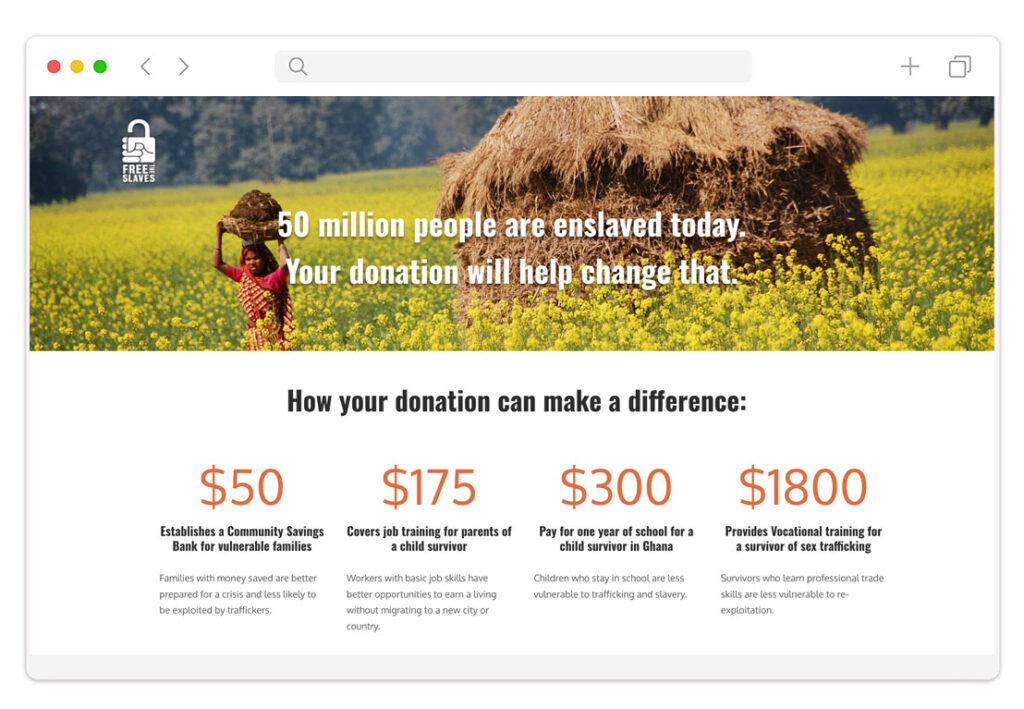Expensive and siloed systems hindered donor tracking, email communications, and insight into development activity.
The legacy Raiser’s Edge CRM was costly and failed to meet Free the Slaves’ needs, hindering the ability to track donor engagement effectively.
The absence of integration between Raiser’s Edge and the online payment processing system led to manual data entry for online donations, increasing the risk of errors.
Free the Slaves lacked a comprehensive view of donor activity, making it difficult to identify major donors and prospects beyond total giving amounts.
The lack of integration between MailChimp and Raiser’s Edge prevented targeted communications, hindering the determination of ROI on marketing efforts.
Fíonta and Free the Slaves collaborated to address the organization’s challenges. Implementing Salesforce Nonprofit Success Pack (NPSP) and a customized online donation form streamlined the donation process and minimized data entry errors.
MailChimp integration enabled segmented lists and improved email communications, while Dupe Blocker reduced duplicate data, lightening the staff’s burden.
Through the Power of Us program at Salesforce, Free the Slaves received ten free user licenses, allowing for greater allocation of resources to critical mission expenses.

MailChimp integration with NPSP enabled Free the Slaves to create segmented lists and target communications, providing valuable insights and improving marketing efforts.
The adoption of Salesforce through the Power of Us program significantly reduced licensing costs, allowing more resources to be directed towards Free the Slaves’ mission to end modern slavery.
The customized online donation form and NPSP integration streamlined the donation process, reducing errors and enhancing efficiency.
Salesforce Nonprofit Success Pack has helped Free The Slaves streamline online donations and reduce errors. Additionally, they can better target communications and collect additional intelligence on donors and prospects. Lastly, licensing costs have been reduced, permitting those dollars to go to more mission-critical expenses.

Steering all project facets like budget, schedule, scope, and risk management while collaborating with technical leads on risk handling, our project managers serve as the primary liaison with clients, offering frequent updates on project progress.
Salesforce developers specialize in crafting and tailoring applications beyond what is available out-of-the-box using Salesforce-specific tools like Apex, Visualforce, and the Lightning Component Framework, and integrating with various systems through Salesforce APIs.
Senior strategic advisors who focus on business transformation with domain expertise in functional, platform, and integration architecture. Our technical architects articulate solutions and design trade-offs to clients, guide the delivery framework, and oversee complex solution design and development, ensuring technical integrity and soundness of the final product.
Leading project solution implementation and coordinating technical processes, our technical leads manage the design, build, internal QA, user acceptance testing, and deployment activities, thus ensuring timely, quality deliverables. Sometimes doubling as solution architects, they work closely with project managers to manage risks and serve as primary client contacts.
Focused on data analysis, schema design, data migration management, and complex data integration. They collaborate with clients and internal teams, handle data mappings, configure data sources, create scripts or apply tools to execute data migration and/or integrations, write test scripts, and document any deviations from original migration plans.
Specializing in Salesforce and associated systems, our experts configure client instances following technical leads’ solutions, focusing on building functionality.


